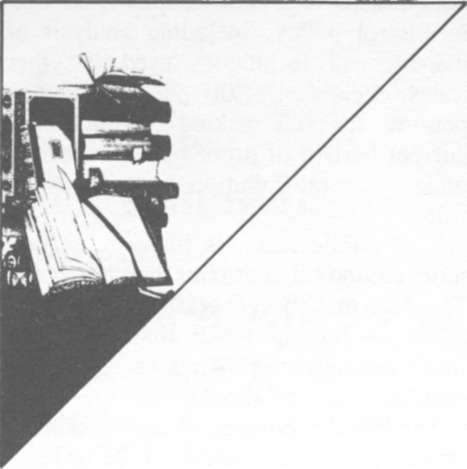 |
Home | Search | Browse | About IPO | Staff | Links |
 |
Home | Search | Browse | About IPO | Staff | Links |
|
Book Reviews By JAMES McGOWAN  Of time and the river John Knoepfle, Poems from the Sangamon. Urbana & Chicago: University of Illinois Press, 1985. Pp. 109. $9.50 JOHN Knoepfle is a varied, surprising, subtle, deeply serious Illinois poet who is readable in the way of Gwendolyn Brooks at her best. Both poets know that seriousness need not exclude humor. Knoepfle and Brooks choose very different subjects, but both are compelling, necessary poets. Knoepfle's work must be known and read; it is good for our mental health. Poems from the Sangamon is Knoepfle's capstone achievement — one above all his other fine books to cherish and remember. The Sangamon Valley, historically considered, is Lincoln country of course, but also the land of the Tamaroa, the Potawatamis, Kickapoo and of early settlers like John Dawson. Later came the farming towns of New Berlin and Petersburg, and the industrial-commercial cities Decatur and Springfield. All of these figure in the poems, which have been scrupulously researched and are accurate in matters of fact. The poems show a movement in time — from prehistoric beginnings to the present. Simultaneously they represent a movement in space along the direction of the river's flow, from its origin as a trickle through a culvert in McLean County, through its emptying into the Illinois River at Beardstown, and the final descent into the Mississippi. But what always interests Knoepfle is not so much procession or progress but a deep continuity — in the terrain contours, in the plants and animals lovingly catalogued, in the myths of the region and how they call us into remembrance and give perspective and dimension to our lives. Poems from the Sangamon is divided into nine sections of roughly comparable length, each, it seems to me, with a theme, or perhaps a tonality, as if it were a movement in a musical suite. And each section has its own specific gravity, a sense of weight and coherence. One could, I suppose, entitle them — section 4, "Tall Tales"; 5, "Tributary Waters"; 6, "Men and Monuments" — though to do so would probably involve a trivialization. And the whole is larger than the parts, as the reader follows the river from its source, time flowing with it. Within the poems' comprehensive world the Native Americans are at least as dignified and worthy as their upstart successors: "old John Dawson" could dance with the Kickapoo, "but when he thought he could sing with them/ the band chief stopped him." Why? "he didn't know the words see/ hell none of us knew/ what it was they were singing.'' But the continuity of words is important: Knoepfle incorporates oral history and found poetry. Here are the beginning and end of a poem taken from a letter from Pere Marquette to his superior, dated 1675: I know one of two things pray for me and pray god It is the simplicity and straightness of this that impresses: the sure sense of line and of word that are among the best features of Knoepfle's poetic technique. Examine the words and their arrangement in these brief passages from "lincoln tomb, a report." the borglum sculpture a teenage boy exits the tomb I am drawn into the poem: I want to nod "yes" after "isn't that right." And the line break at "fierce" is perfect, serving to give emphasis to both adjectives in this unexpected but brilliant combination: the "fierce/ affectionate" touch. Finally, here in its entirety is a poem from early in the book. "Saturday morning." This does in small what is the work of the entire volume: to hold together past and present. it is as if you were walking For Knoepfle, that "something that should be there." that something we search for and need, is there — in the landscape, the people, the myths — if we search in the sane and wholesome spirit by which these Sangamon poems speak. Though time and the river flow one way, we are the better for heeding a countercurrent. Let us be, and willingly, borne back into the past. In Knoepfle's poems we dream the past, and know it, and live with our accommodating ghosts — the words and shadowy faces of our Illinois heritage. James McGowan is on the faculty of the Department of English, Illinois Wesleyan University, Bloomington. 30/July 1986/Illinois Issues |
|
|